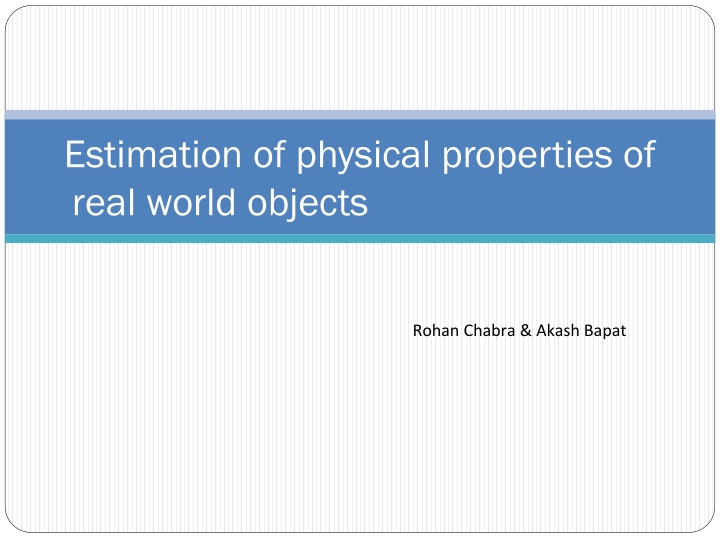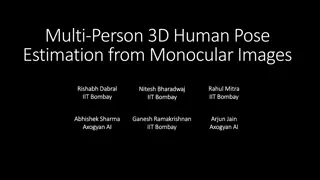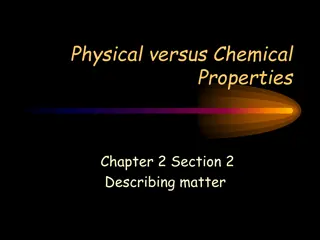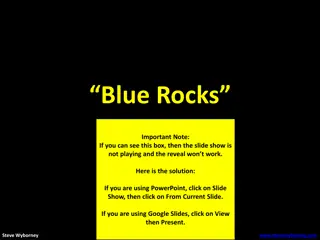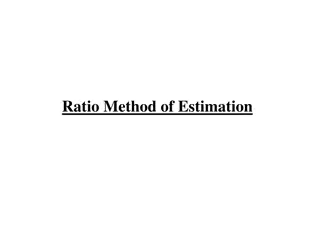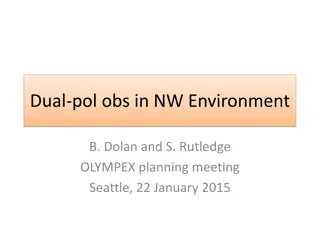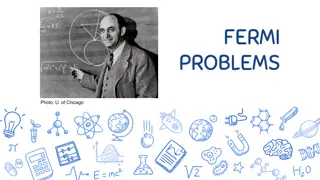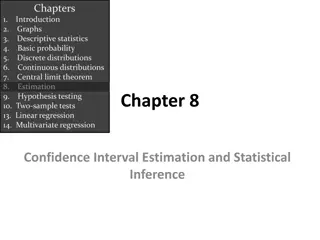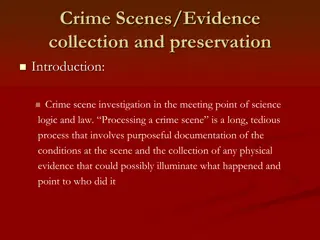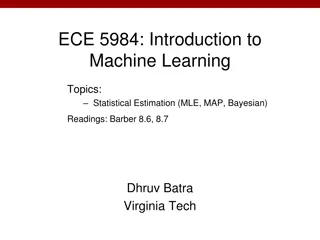Estimation of Physical Properties in 3D Scene Understanding
Understanding physical properties of real-world objects through estimation techniques is crucial for developing intelligent systems that can predict collisions, track objects, and simulate interactions. This involves utilizing computer vision, data acquisition tools like Microsoft Kinect, and advanced algorithms for 3D tracking. The process also involves estimating motion properties, such as position and velocity, using vision-based data. The research covers topics like object tracking, coefficient of restitution analysis, and the challenges involved in tracking high-velocity objects in a 3D environment.
Download Presentation

Please find below an Image/Link to download the presentation.
The content on the website is provided AS IS for your information and personal use only. It may not be sold, licensed, or shared on other websites without obtaining consent from the author.If you encounter any issues during the download, it is possible that the publisher has removed the file from their server.
You are allowed to download the files provided on this website for personal or commercial use, subject to the condition that they are used lawfully. All files are the property of their respective owners.
The content on the website is provided AS IS for your information and personal use only. It may not be sold, licensed, or shared on other websites without obtaining consent from the author.
E N D
Presentation Transcript
Estimation of physical properties of real world objects Rohan Chabra & Akash Bapat
Motivation 3D Scene Understanding Intelligent systems that predict collisions between objects in an environment. This system can be used in robot industry to guide robots in unexpected scenarios. Construction of VFX and special effects.
Background Object tracking : Track object even though it is occluded Binding vision to physics based simulation: The case study of a bouncing ball . By N. Kyriazis, I. Oikonomidis, and A. Argyros. In Proc. BMVC, 2011. Data Physics based simulation Computer Vision Graphics
Background Estimation of motion properties of objects in a video. Parameters such as:- position, linear velocity angular velocity assuming the environment and physical properties are known.
Data acquisition Microsoft Kinect 1.0 is used in the present setup. FPS= 30 Difficulties in tracking in 3D Motion blur at high velocities Depth data is recorded in mm 3D world point is estimated using camera matrix transformation
3D tracking Fast versions of 3D tracking algorithms assume accurate depth maps. Most tracking algorithms assume small motion. 3D data are piecewise planar, hence keypoint-based detectors tend to fail. Hence, online-MIL tracker is uses learning for tracking Normal plane estimation is done using RANSAC or regression.
Coefficient of restitution-data Values through vision 0.45 Avg C.O.R = 0.7775 0.4 0.35 0.3 0.25 Height(m) 0.2 0.15 0.1 0.05 0 Time(s)
Coefficient of restitution Values through Simulation with estimated C.O.R 0.45 0.4 0.35 Estimated C.O.R = 0.7784 0.3 0.25 0.2 0.15 0.1 0.05 0 -0.05 Time(s)
Velocity changes in x & z We noticed that velocities in x & z directions also change at every bounce. We applied SVD to find out impulse responsible for this. N is number of bounces , v is averaged over time J= t F = m v mg t =m v Log ( x) + log( t ) = log( vx/g) Log ( z) + log( t ) = log( vz/g) 2N equations, N+2 unknowns x= 0.04 , z=0.08 , t = 0.1 s = 5*10e-3
Sliding friction -data 30 25 Kinect data 20 15 Distance X Z 10 5 0 0 0.1 0.2 0.3 0.4 0.5 0.6 0.7 -5 Time -10
Sliding friction 30 25 Simulated values 20 15 Distance X Z 10 5 0 0 0.1 0.2 0.3 0.4 0.5 0.6 0.7 -5 Time -10
Numerical simulation Bullet physics is used for simulation Inaccurate for calculating sliding friction due to multiple collisions and impulses. Hence, we are using a pseudo-force We plan to use another physics platform, or write our own code. OpenGL is used for rendering.
Coefficient of restitution e= sqrt(h2/h1) Eseed= random value between 0-1 H = difference in heights Error = *signum( H)*eRMS. Enew=Eprev Error where is learning factor
Coefficient of restitution Values through Simulation with estimated C.O.R 0.45 0.4 0.35 Estimated C.O.R = 0.7784 0.3 0.25 0.2 0.15 0.1 0.05 0 -0.05 Time(s)
Coefficient of restitution-data Values through vision 0.45 Avg C.O.R = 0.7775 0.4 0.35 0.3 0.25 Height(m) 0.2 0.15 0.1 0.05 0 Time(s)
Alpha = 0.005 Initial or Seed COR = 0.5 Iteration Error Estimated COR 1 -3.01837 0.545553 2 -6.53181 0.758875 3 -4.18844 0.846591 4 -3.25559 0.899585 5 5.689057 0.737758 6 -4.00487 0.817953 7 -3.39035 0.875426 8 -3.19764 0.92655 9 7.160681 0.670173 10 -5.05082 0.797727 11 1.615586 0.784677 12 1.115937 (Least Error magnitude) 0.77845 13 1.144201 0.771904 14 -4.05838 0.854256 15 3.747356 0.784043 16 1.261047 0.776092 17 1.141743 0.769574 18 -3.95387 0.847739 19 -3.23747 0.900145 20 5.70068 0.737656 Final Estimated COR = 0.77845
Sliding friction 0.5mv2= Ffr. s , where Ffr= m g Vseedis random velocity & seed 0 X = avg(Kinect position simulated position) E = RMSerror( X) Error = signum( X)*E Vnew= Vprev+ Error * new= prev+ V2/2gs * is to be selected such that ssimulated sKinect
Estimated V2simulated/2gssimulated simulated 0.313 0.297 0.278 0.250 0.271 0.188 0.316 0.295 0.267 0.252
Sliding friction 30 25 Simulated values 20 15 Distance X Z 10 5 0 0 0.1 0.2 0.3 0.4 0.5 0.6 0.7 -5 Time -10
Comparison 30 30 25 25 Simulated values Kinect data 20 20 15 15 X Z Distance X Z 10 10 5 5 0 0 0 0.1 0.2 0.3 0.4 0.5 0.6 0.7 0 0.1 0.2 0.3 0.4 0.5 0.6 0.7 -5 -5 Time Time -10 -10
Future Work Incorporation of mesh Stereo estimation at 60/120 fps for better accuracy. Estimation of rolling friction. Validation using actual physics experiments. For ground truth, Accelerometer and gyroscope can be used to estimate and v Use of real-time 3D tracking algorithms Experiment with different surface pairs & objects of different sizes/shapes.
